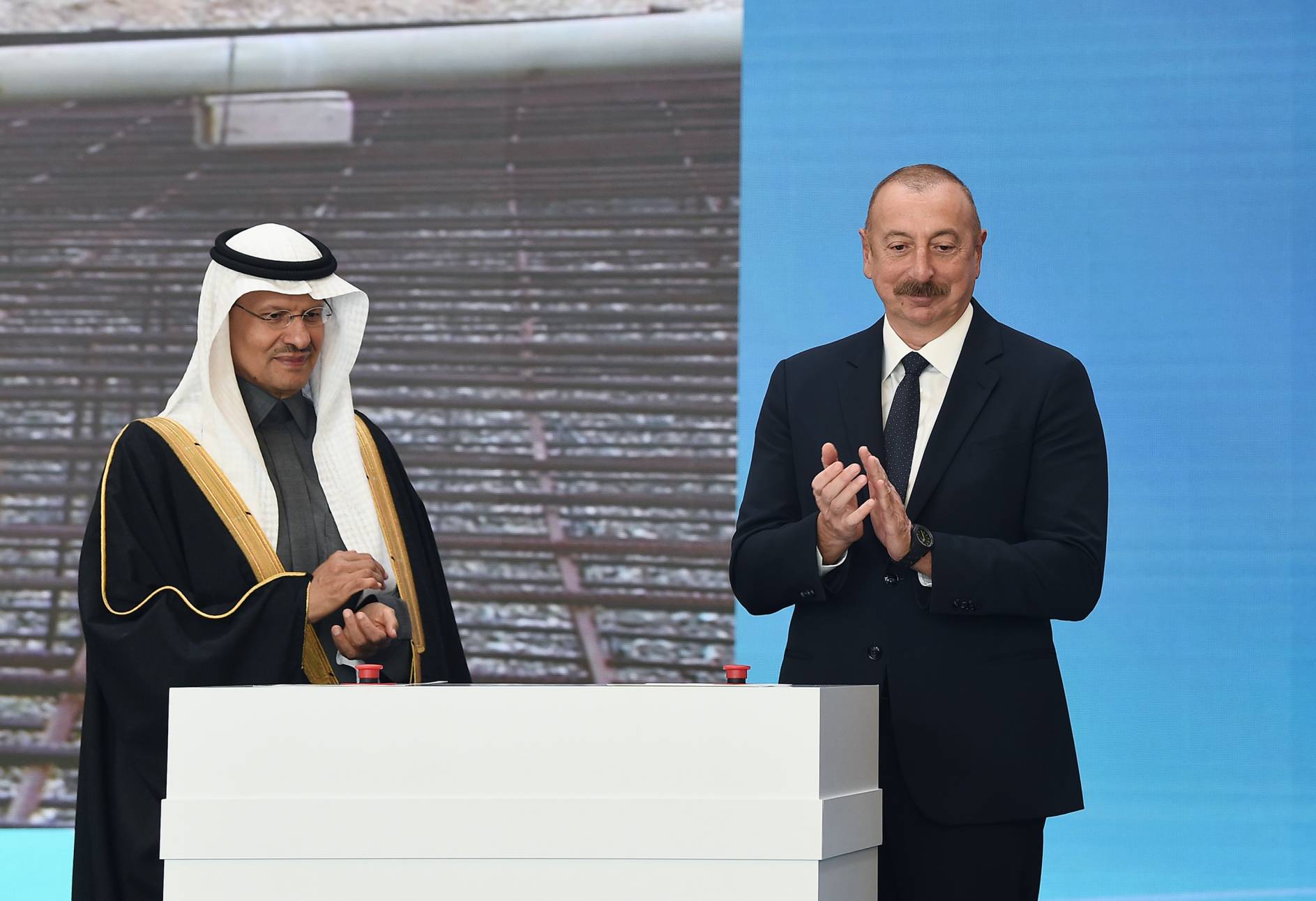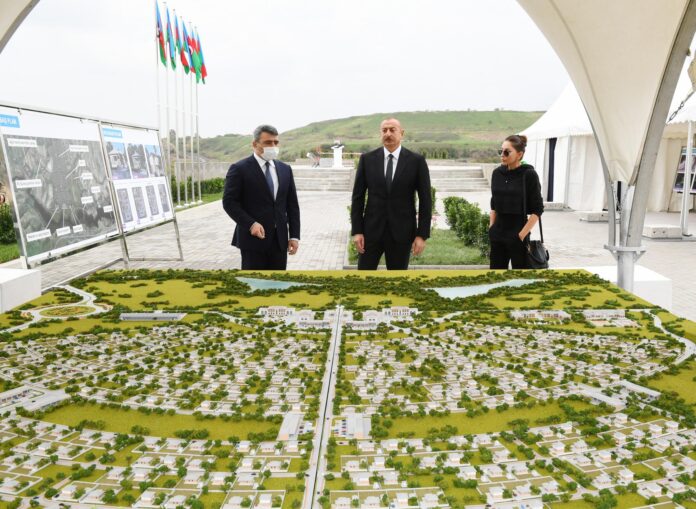BY KELLY CHAIB DE MARES
AZERI OBSERVER STAFF WRITER
The 27th Conference of the Parties of the UN Convention on Climate Change (COP 27) established a fund to pay developing nations for damage caused by climate change, but without specific obligations for wealthy countries to deposit money. Although the Conference failed to heed the call for a “phase-down” of all fossil fuels, Azerbaijan, as one of the world’s top 25 oil and gas producers, continues in its efforts to become a regional hub producing affordable and clean energy.
Azerbaijan joined the international efforts to mitigate the adverse effects of global climate change by ratifying the United Nations Framework Convention on Climate Change (UNFCCC) in 1995. The Convention has been signed by 198 parties which meet every year at the Conference of the Parties (COP), with the goal of stabilizing atmospheric concentrations of greenhouse gases (GHGs) “to avoid dangerous anthropogenic interference with the climate system.”
The Convention is based on the principle of “common but differentiated responsibilities and respective capabilities,” meaning there is consideration of each country’s development level, historical onuses, and respective capabilities. In this regard, Azerbaijan signed as a Non-Annex I country, meaning that it does not have specific obligations other than being encouraged to cooperate on climate change mitigation and managing the impact of global warming.
Nevertheless, based on the framework of the Paris Agreements signed at COP 21, Azerbaijan committed to a 35% reduction of GHG emissions by 2030, using the emissions in 1990 as a baseline. Furthermore, at COP 26 in 2021, Azerbaijan extended its pledges, with a 40% GHG emission reduction target by 2050, and created a “Netto Zero Emission” Zone in the liberated territories. Once these commitments have been made, Azerbaijan’s participation in COP 27 this year was represented by Mr. Mukhtar Babayev, Minister of Ecology and Natural Resources, who should have discussed Baku’s concerns on climate change at a ministerial level.
Although Azerbaijan contributes only 0.15% of the world’s total GHG emissions, the country is highly sensitive to the effects of different levels of climate change. According to the 2020 Inform Risk Index, Azerbaijan is ranked 61st out of 191 countries regarding its risk of facing a significant disaster. Furthermore, as pointed out by the Government in its Fourth National Communication to UNFCCC in 2021, water resources have decreased by 15% in recent decades, which will amplify the impacts on human health, livelihoods, and ecosystems.
Moreover, as registered by EU4Climate, temperatures in Azerbaijan will rise faster than the global average of 2ºC, with a potential warming of 4.7°C by the 2090s. Temperature increases of this magnitude could reduce agricultural productivity, exacerbate issues of desertification and soil salinity, and increase demand for irrigation, putting further pressure on the country’s water supply.
According to the current GHG emissions inventory, the energy sector is the leading producer of emissions, accounting for about 75% of the country’s total emissions. However, with an oil-based economy, the mitigation policies and measures should consider the oil industry’s vital share (around 42%) in the gross domestic product (GDP). Furthermore, it cannot be forgotten that the country has been a prolific oil producer since the late 1800s and is now contributing to Western energy security.
However, as its domestic energy consumption has increased in recent years, Azerbaijan has struggled to meet its obligations to export gas westward. As a result, it has had to import natural gas from Russia to address those shortfalls. Therefore, the Azerbaijani government is investing in renewable energy to become a regional leader in green energy production, with the main target of increasing the share of the installed capacity of renewable energy from the current 17.3% to 30% in the country’s overall energy balance by 2030.
 The government of Azerbaijan intends to increase the share of renewable energy sources in the country’s overall energy production to 30 percent by 2030.
The government of Azerbaijan intends to increase the share of renewable energy sources in the country’s overall energy production to 30 percent by 2030.
Although the State began a program on the use of alternative energy in 2004, the institutional capacity was adjusted with “Renewable Energy Agency” in 2020 and the “Law on the Use of Renewable Energy Sources (RES)” in 2021. The Agency under the Ministry of Energy is currently developing a five-year RES strategy for 2022-2026 and has drafted Paragraph 5, “Clean Environment and Green Growth Country,” of the public policy document “Azerbaijan 2030: National Priorities for Socio-Economic Development.”
The Ministry of Energy estimates 27000 MW as the economically viable and technically feasible amount from renewable energy sources in the country, including 3000 MW from wind energy, 23000 MW from solar power, 380 MW from bioenergy potential, and 520 MW from mountain rivers. To develop this potential, the government is supported by various stakeholders, such as international donors and private-public partnerships.
The first megaprojects that are expected to generate about 5% of Azerbaijan’s current energy needs were signed in 2020. One of the deals with ACWA Power (Saudi Arabia) was for constructing a 240-megawatt wind farm in the Khizi and Absheron districts on the coast of the Caspian Sea, the windiest region in the country. A second deal with Masdar (United Arab Emirates) was for the 230 MW Garadagh Solar Power Plant. Over 500,000 solar panels will be installed, making it the fourth-largest plant in Europe and the former Soviet Union.
 Azerbaijani President Ilham Aliyev and Saudi Arabian Energy Minister, Prince Abdulaziz bin Salman attend a groundbreaking ceremony of the 240 MW Khizi-Absheron Wind Power Plant on January 13, 2022.
Azerbaijani President Ilham Aliyev and Saudi Arabian Energy Minister, Prince Abdulaziz bin Salman attend a groundbreaking ceremony of the 240 MW Khizi-Absheron Wind Power Plant on January 13, 2022.
To reduce the centralization of the existing renewable energy governing structure, Azerbaijan – with help from the European Bank for Reconstruction and Development – is developing “renewable energy auctions” to support private investment in further renewable energy projects. Additionally, with the same aim of decentralizing renewable energy, pilot projects have been implemented in cooperation with the German Energy Agency to apply solar energy systems for sub-artesian wells, low-power portable solar and battery power systems, combined solar and heat pump power systems for greenhouses, and energy systems that use biomass for heat energy in buildings.
With the Asian Development Bank’s support, a photovoltaic system with a capacity of 100 kW is being installed in Boyukshor Lake. The International Financial Corporation, part of the World Bank, is also cooperating with the development of the road map for offshore wind energy. In addition, the United Nations Development Programme is implementing a project to scale up investment in energy efficiency in buildings through enhanced energy management information systems and green social housing.
Many of these efforts involve the liberated territories, which Baku has committed to transforming into “green energy” zones. As explained in an interview for the Azeri Observer by Orkhan Baghirov, Senior Research Fellow at the Center for Studies of the South Caucasus, “The Kalbajar and Lachin regions have excellent wind energy potential, while the Zangilan and Jabrayil regions have more solar energy potential.” The main partners working with the government in this regard are Japan’s Tokyo Electric Power Company (Tepco) and the British oil producer BP, who is currently constructing a 240 MW solar power plant in the Jabrayil region.
In addition to the projects underway in support of clean energy generation, talks have already begun to realize the idea of Azerbaijan becoming a regional hub. For example, four memorandums of understanding were signed with Masdar, specifically covering cooperation in exporting Azerbaijani electricity and hydrogen produced from renewable sources. Likewise, earlier this year, Romanian officials discussed prospects for exporting electricity to Romania generated by offshore wind turbines in the Caspian Sea via underwater cables stretching across the Georgian Black Sea.
It may be concluded that Azerbaijan’s goal to become a regional green energy hub will achieve various objectives simultaneously. The economy is being diversified, decreasing the dependence on the oil and gas sector, while the government is fulfilling international agreements, not only under the Convention on Climate Change, but also in alignment with Sustainable Development Goal 7 on Affordable and Clean Energy and Goal 13 on Climate Action. And, almost as important as the above factors, the country will benefit from energy security, decreasing domestic oil and gas consumption while generating additional revenue through crude oil and gas exports.



















